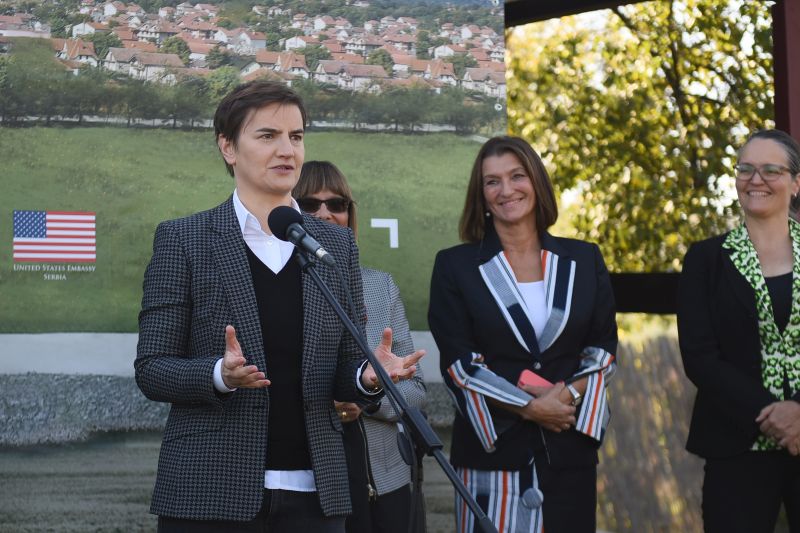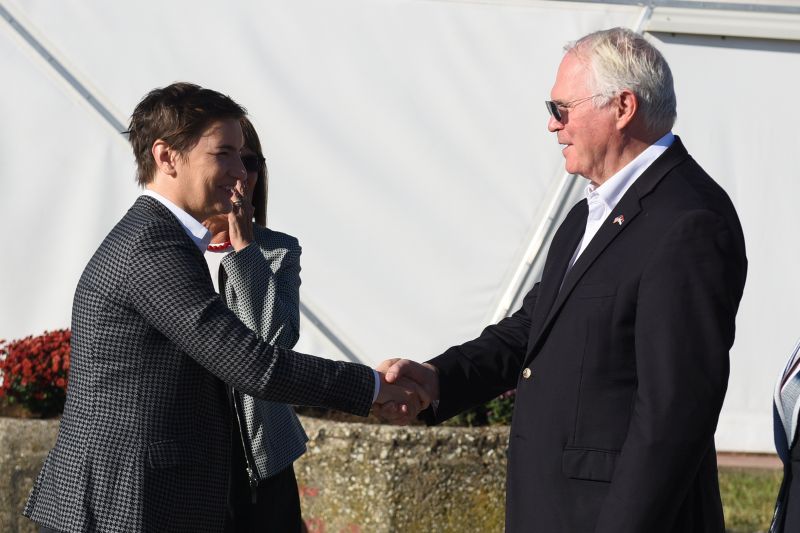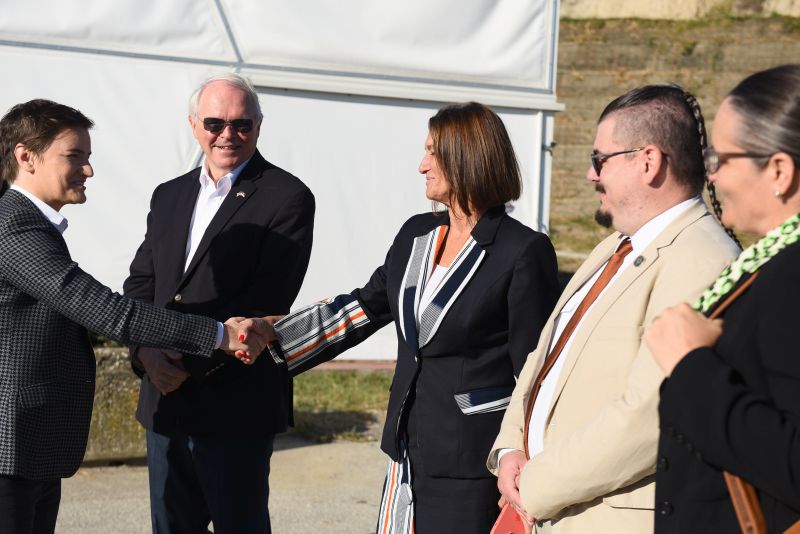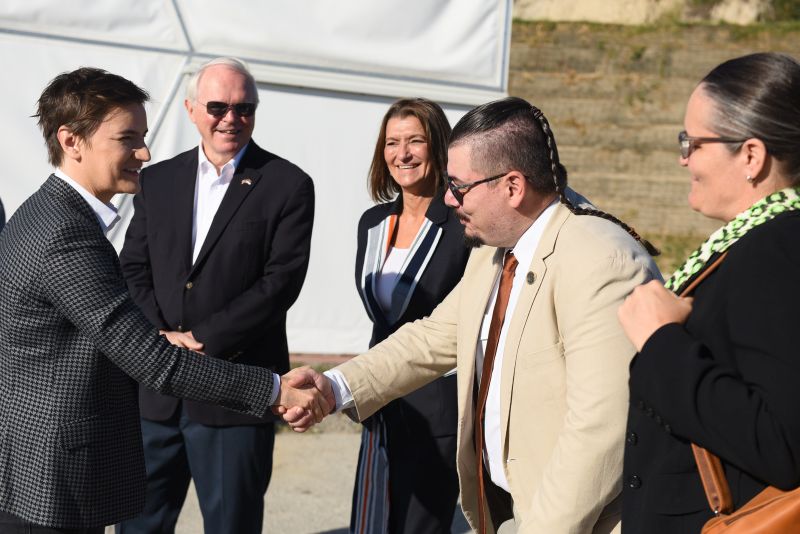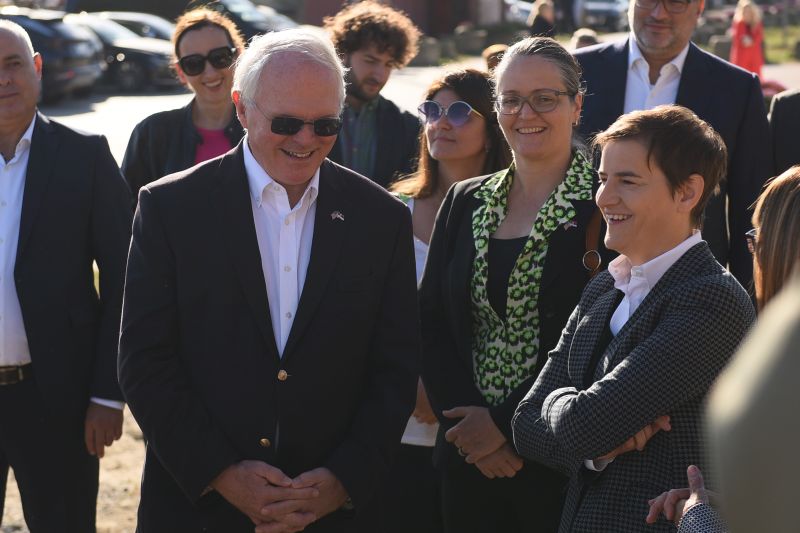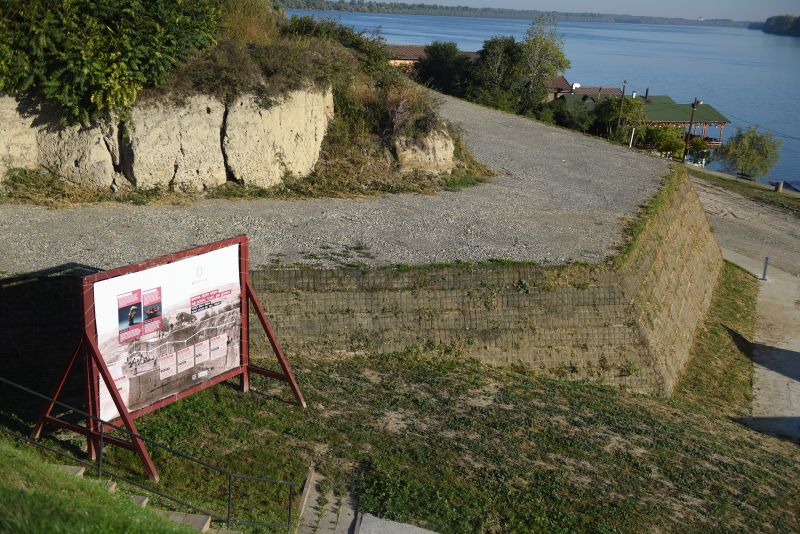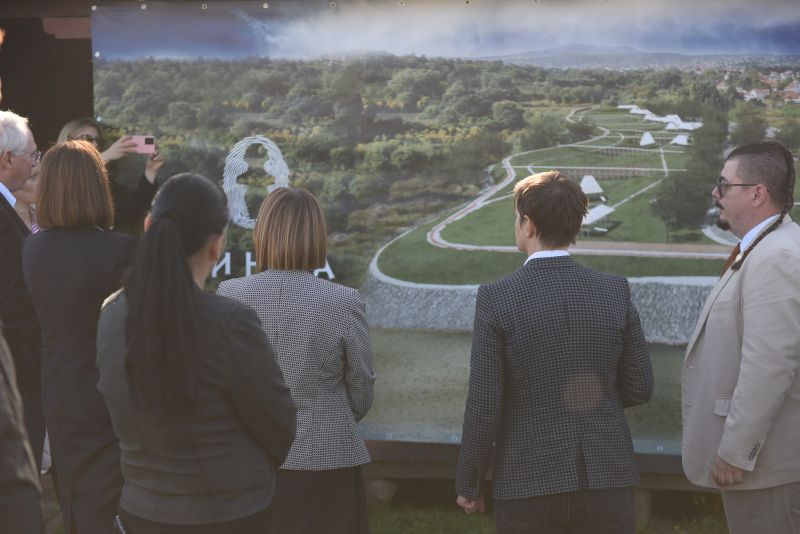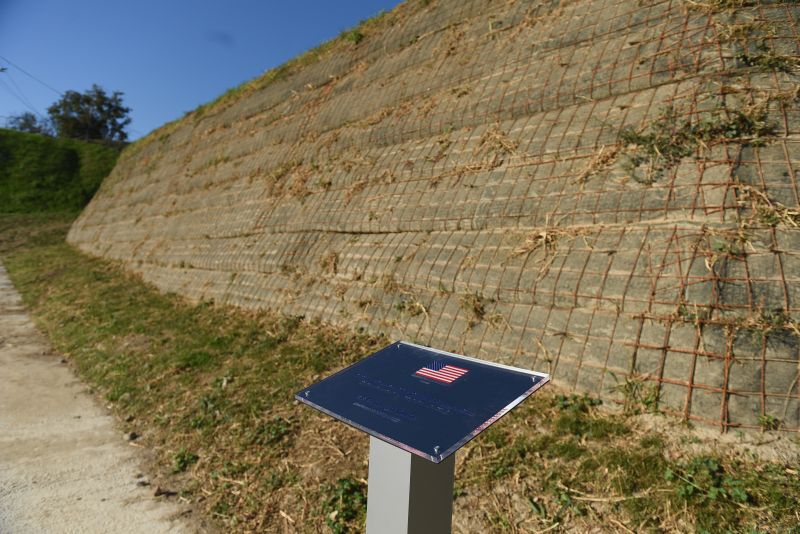Prime Minister Ana Brnabic together with Deputy Prime Minister and Minister of Culture Maja Gojkovic and US Ambassador to Serbia Christopher Hill visited today the Belo Brdo - Vinca archaeological site on the occasion of the completion of landslide rehabilitation works.
- Serbia
Get to know Serbia
- Citizens
Culture and science
Health services
Pension and disability insurance
- Business
Employment
Economy
- Media
- Government
- Contact
Keep in touch
Keepin touch
Whether you have a question, comment, suggestion or any problem in the purview of the government, send us your message and we will try to respond as soon as possible. If your problem is not in our purview, we will forward your message to the relevant institution.
Rehabilitation of landslide at archaeological site Belo Brdo - Vinca
On that occasion, Brnabic pointed out that Belo Brdo - Vinca is guarding a seven-thousand-year-old treasure, adding that on this day, one year ago, for the first time in decades, the deterioration of that archaeological site was stopped.
She said the first step in protecting the site was completed thanks to a partnership with the US and the US Ambassadors Fund for Cultural Preservation (AFCP).
The Prime Minister said that the next step is the construction of a collector and waste water treatment system in order to protect the Bolecica River.
We will solve a large part of the problem with a collector, both for the site and for the entire Vinca settlement in the municipality of Grocka, she said, adding that part of the problem will be solved by building a large wastewater treatment plant, and after that, a coastal fortification and a bicycle path will be built.
According to her, this will be followed by the construction of a scientific center for Neolithic research and the construction of a visitor center.
The Prime Minister pointed out that more than €10 million will be invested in the entire project in the next three to four years, of which at least €1.5 million will be financed by the City of Belgrade, and the rest by the Government of Serbia, which shows a different attitude towards culture and historical heritage.
Hill pointed out that the US Embassy in Serbia is very proud to participate in the landslide rehabilitation project at this archaeological site, noting that after its stabilization, the research of what lies beneath this land will follow.
He expressed particular satisfaction at the opportunity for the US Embassy to cooperate with scientists in Serbia, archaeologists, and all others who were involved in the rehabilitation project.
The capital project "Reconstruction, revitalization and presentation of the archaeological site Belo Brdo in Vinca" is implemented by the Institute for Protection of Cultural Monuments of Serbia, in cooperation with the platform Serbia Creates, the Ministry of Culture, the City of Belgrade and the Belgrade City Museum.
In addition, the rehabilitation and revitalization of the site was partially financed from AFCP funds.
-
 Niš, 12 December 2025
Niš, 12 December 2025Healthcare provided in Niš at highest level
-
 Aleksinac, 12 December 2025
Aleksinac, 12 December 2025Government’s goal to improve citizens’ quality of life
-
 Ražanj, 12 December 2025
Ražanj, 12 December 2025Balanced regional development one of main government tasks
-
 Belgrade, 10 December 2025
Belgrade, 10 December 2025Government working resolutely, dedicatedly to strengthen human rights system
-
 Belgrade, 10 December 2025
Belgrade, 10 December 2025Exchange of knowledge, experiences with Chinese Institute of Basic Research in Clinical Medicine
-
 Belgrade, 9 December 2025
Belgrade, 9 December 2025Green transformation one of strategic policies of Serbian government
-
 Belgrade, 9 December 2025
Belgrade, 9 December 2025Fight against corruption foundation of responsible, transparent society
-
 Belgrade, 9 December 2025
Belgrade, 9 December 2025Serbia manages to accelerate reforms, strengthen economy despite challenges
-
 Belgrade, 8 December 2025
Belgrade, 8 December 2025Serbia chooses cooperation, common European future
-
 Belgrade, 7 December 2025
Belgrade, 7 December 2025Energy situation in Serbia under control

